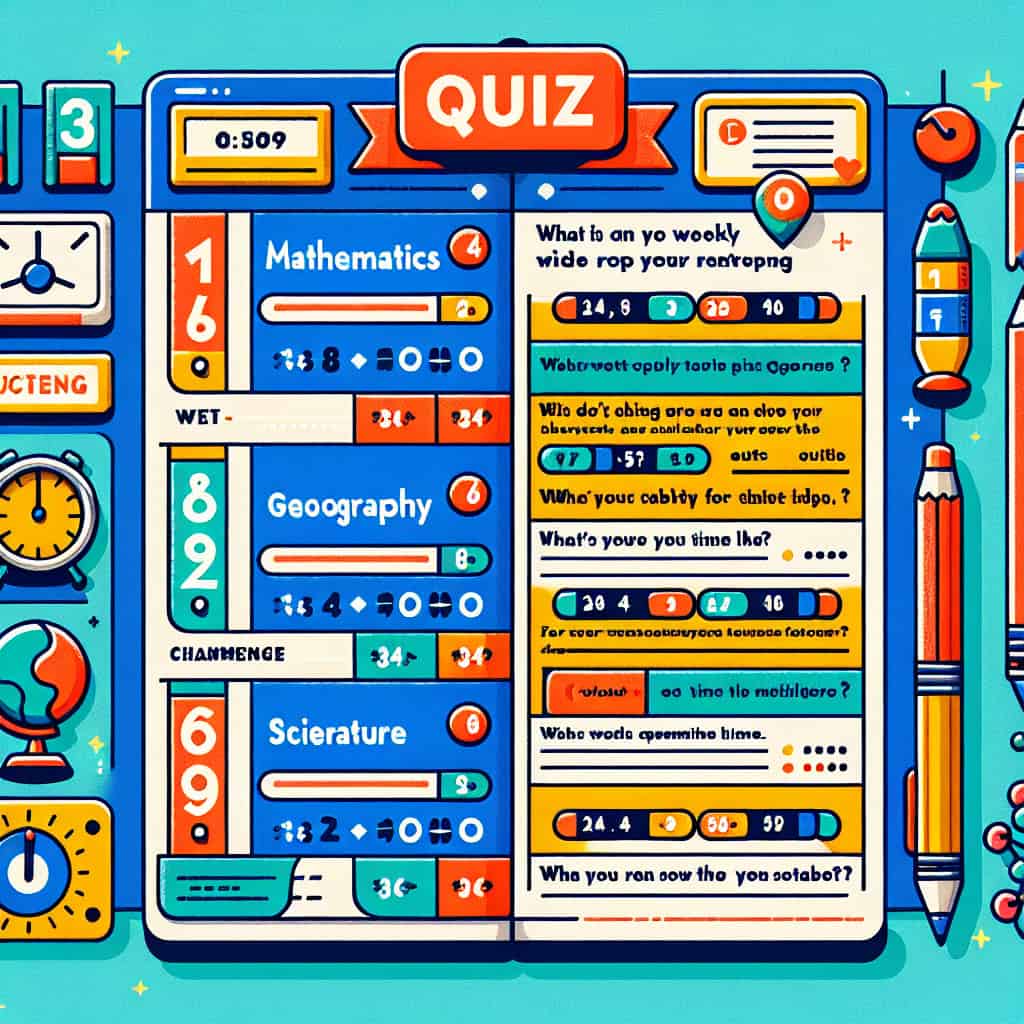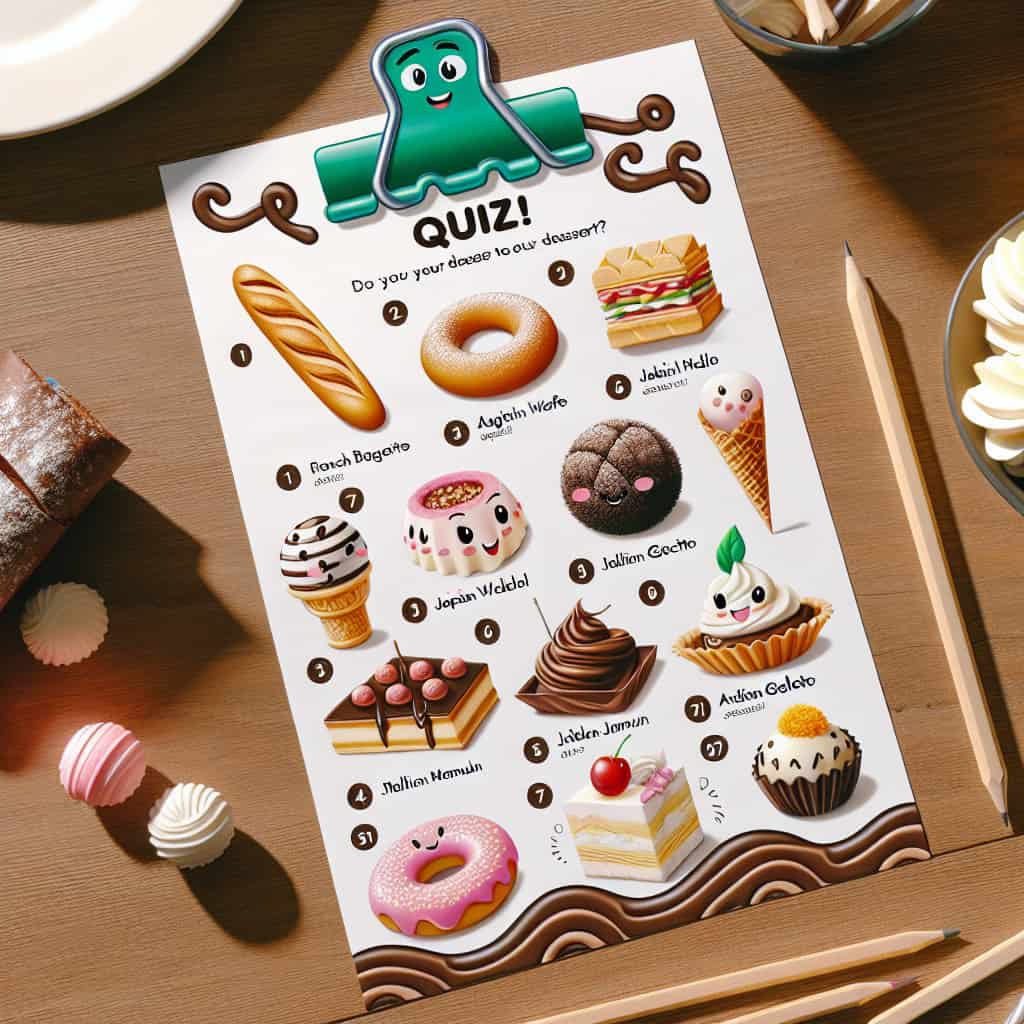**The Untold Secrets of Mastering the Art of Quiz Making: A Guide for Aspiring Enthusiasts**
*The art of crafting an engaging quiz is often shrouded in mystery, but with the right tools and techniques, you can create a quiz that stands out from the crowd. Read on to uncover the secrets of successful quizzes making and become a master in creating unforgettable quiz experiences.*
**Introduction: The Curious World of Quiz Making**
Imagine yourself in a bustling New York City café, sipping your morning cup of Joe while scrolling through your social media feed. And there it is – *yet another* quiz that claims to reveal the hidden depths of your personality based on your favorite type of pizza topping. Intrigued, you tap on it, eager to see what new insights await.
As you progress through the quiz, two questions come to mind: *Why are quizzes so addictively entertaining?* and *How can you create your own masterpiece to captivate your audience?*
For those enchanted by the world of quizzes, their allure lies not only in the moments of self-discovery they provide, but also in the way they capture our imagination and transport us to new realms. From whimsical matchmaking games to hard-hitting political surveys, quizzes have the power to engage us like no other content form.
But enough about their charm – let’s get down to business. This comprehensive guide will give you a step-by-step plan for creating quizzes that will make even the most discerning New York Times reader take notice. So, buckle up and get ready to dive into the fascinating world of quizzes making!
**Step 1: Define Your Quiz Objective**
Just like any great piece of content, a well-crafted quiz starts with a clear objective in mind. Whether you’re using a quiz to educate, entertain or market a product, understanding your goal will help shape every aspect of the quiz’s development.
Here are some common objectives for quizzes making:
– **Entertainment**: Create a fun, lighthearted quiz that elicits laughter and sparks lively conversation among friends.
– **Education**: Develop an informative quiz that tests your audience’s knowledge and teaches them something new.
– **Marketing**: Design a quiz that promotes a product or service by cleverly incorporating related questions and showcasing the benefits of said product.
**Step 2: Choose the Right Type of Quiz**
Now that you know your objective, it’s time to select the perfect quiz format to achieve it. Here are some popular options:
– **Personality quizzes**: These assess different aspects of an individual’s character and offer personalized results. Think “Which Hogwarts house do you belong in?” or “What type of coffee are you?”
– **Trivia quizzes**: These test your audience’s knowledge on a specific topic, ranging from geography to pop culture. **Cue Jeopardy music**
– **Survey quizzes**: These gather opinions on a particular issue or trend, allowing you to understand your audience’s preferences.
**Step 3: Lay the Foundation with Captivating Questions**
Crafting irresistible questions is the secret sauce that sets remarkable quizzes apart from the rest. Keep these tips in mind when developing your questions:
– **Make it relevant**: Ensure your questions align with your objective and resonate with your target audience.
– **Strive for simplicity**: Keep questions clear and concise so that participants can quickly understand and respond.
– **Add a dash of humor**: Inject wit into your quiz to make it more enjoyable (But remember, there’s a fine line between funny and offensive, so tread carefully!).
– **Mix it up**: Vary your question types (multiple-choice, true or false, etc.) to maintain engagement throughout the quiz.
**Step 4: Craft Compelling Results**
The moment of truth has arrived – your quiz takers have reached the end and eagerly await their results. Here’s how to make them memorable:
– **Make it personal**: Personalize the outcomes by adding specific details that make the participant feel seen and understood.
– **Be accurate**: Keep your results grounded in truth so that they maintain credibility and resonate with your audience.
– **Keep it short and sweet**: Results should be concise and easy to digest, while still providing enough information to satiate the quiz taker’s curiosity.
**Step 5: Add the Finishing Touches**
Put your quiz through a final round of polishing before sharing it with the world. This includes:
– **Proofread**: Check for any spelling or grammar errors, ensuring a professional presentation.
– **Optimize for SEO**: Use relevant keywords and semantic words to improve the visibility of your quiz, increasing its chances of being found online.
– **Test**: Share your quiz with trusted friends or colleagues and gather feedback to perfect the experience and iron out any issues.
**Conclusion: Embrace Your Inner Quiz Master**
Quizzes making might seem like a daunting endeavor at first, but with these steps and a little creativity, you’ll be crafting captivating quizzes that captivate the hearts and minds of your audience in no time. Now, go forth and conquer the world of quizzes – and don’t forget to share your creations with us too!
Create a Quiz App using HTML CSS & JavaScript | Quiz Web App using JavaScript
Americans are Dumber than the Rest of the World? (Quiz Battle between Americans and Europeans!!)
What is the best website for making quizzes?
The best website for making quizzes greatly depends on personal preferences and needs. However, a popular and user-friendly option is QuizMaker by Typeform. It offers an intuitive interface, various templates, and customization options to create engaging and visually appealing quizzes for different purposes.
What is the best way to create a quiz?
The best way to create a quiz involves the following steps:
1. Define your goal: Determine the purpose of your quiz, such as testing knowledge, collecting data, or engaging your audience.
2. Select a format: Choose the quiz format that best suits your goal, such as multiple-choice, true/false, matching, or fill-in-the-blank questions.
3. Research your topic: Gather accurate and up-to-date information related to your quiz topic to ensure you create high-quality content.
4. Write clear and concise questions: Create questions that are easy to understand and efficiently test the participant’s knowledge.
5. Provide answer options: For multiple-choice and matching quizzes, offer a variety of plausible answer choices. Always include a correct answer and several plausible but incorrect options.
6. Organize your questions: Arrange your quiz questions in a logical order, starting with easier questions and gradually increasing the difficulty level.
7. Design an attractive layout: Use visual elements, such as images, colors, and fonts, to make your quiz visually appealing and engaging.
8. Test your quiz: Before sharing your quiz with your intended audience, test it yourself or have others review it to ensure it is error-free and achieves your desired goal.
9. Promote your quiz: Share your quiz on social media, your website, or through email to reach your target audience.
10. Analyze results: Review the quiz results to gain insights into the effectiveness of your quiz, identify areas for improvement, and gather data for future content creation.
Can you make quizzes for free?
Yes, you can make quizzes for free using various online platforms and tools. Some popular options include Google Forms, Quizlet, Kahoot!, and Quizizz. These platforms offer user-friendly interfaces and customizable features that allow you to create engaging quizzes without any cost. Additionally, sharing your quizzes with others is simple and accessible.
Where can I Create a quiz?
You can create a quiz on various platforms such as Google Forms, QuizMaker, Typeform, SurveyMonkey, or even using social media platforms like Instagram and Facebook. Many of these tools offer customizable templates, making it easy to create engaging quizzes for your audience.
What are the essential elements to consider while creating an engaging quiz?
When creating an engaging quiz, it is essential to consider the following elements:
1. Purpose: Determine the main objective of the quiz, whether it’s for entertainment, education, or assessment.
2. Target audience: Keep in mind the age group, interests, and knowledge level of your intended participants.
3. Topics and themes: Choose subjects that will interest and challenge your target audience while being relevant to the purpose of the quiz.
4. Quiz format: Select a suitable format for the quiz, such as multiple-choice, true or false, or fill-in-the-blank questions.
5. Question difficulty: Create a balanced mix of easy, medium, and difficult questions to maintain engagement and cater to different skill levels.
6. Clarity and conciseness: Ensure your questions and answer options are clear, concise, and free of ambiguity or potential confusion.
7. Visual appeal: Incorporate images, videos, or other multimedia elements to make the quiz visually engaging and dynamic.
8. Time limit: Consider setting a reasonable time limit for your quiz to add an element of challenge and maintain participants’ attention.
9. Feedback and explanations: Provide feedback on participants’ answers, including explanations for correct and incorrect responses, to enhance their learning experience.
10. Shareability: Make it easy for participants to share their quiz results on social media or with friends, which can help increase the reach and engagement of your quiz.
How can you effectively balance a quiz’s difficulty level for a wide range of participants?
To effectively balance a quiz’s difficulty level for a wide range of participants, you can consider the following strategies:
1. Understand your audience: Identify the age group, knowledge, and interests of your target audience to create questions that cater to a variety of skill levels.
2. Mix question difficulty levels: Include a mix of easy, moderate, and difficult questions to ensure all participants have a chance to answer correctly and stay engaged throughout the quiz.
3. Vary question formats: Use a combination of multiple-choice, true/false, short answer, and other question formats to cover different learning styles and provide a well-rounded experience.
4. Use context clues: For more challenging questions, provide context clues or hints within the question or answer choices to assist participants in working through the problem.
5. Balance time limits and point values: Set appropriate time limits and point values for each question, ensuring that easier questions do not hold too much weight while providing ample time for more complex questions.
6. Incorporate adaptive questioning: If possible, adjust the difficulty of the questions based on participant performance, so that they are continually challenged but not overwhelmed.
7. Encourage collaboration: In team-based quizzes, promote collaboration and communication among participants to leverage their combined knowledge and skills.
By implementing these strategies, you can create an engaging and balanced quiz experience that appeals to a wide range of participants.
What role does feedback play in enhancing the user experience in an online quiz, and how can you implement it effectively?
Feedback plays a crucial role in enhancing the user experience in an online quiz. It serves several purposes, such as:
1. Reinforcing learning: Providing feedback during or after a quiz helps users understand the correct answers and reinforces their understanding of the subject matter. This fosters a better learning experience.
2. Tracking progress: Feedback allows users to track their progress and identify areas where they may need improvement, thus enabling them to focus on those topics and enhance their knowledge.
3. Motivation: Positive feedback, such as praise or rewards, can motivate users to continue taking quizzes and stay engaged, ultimately leading to a better user experience.
To implement feedback effectively in an online quiz, consider the following strategies:
1. Timely feedback: Offering feedback immediately after a question is answered allows users to learn from their mistakes and adjust their approach for the remaining questions.
2. Clear explanations: Make sure that your feedback is concise and easy to understand. Clearly explain why an answer is correct or incorrect, and provide any necessary background information to help users grasp the concept.
3. Personalization: Tailor feedback to each user’s performance, highlighting their strengths and areas for improvement. This can make the experience more engaging and encourage users to address their weaknesses.
4. Positive reinforcement: Use encouraging language, even when a user answers a question incorrectly. Focus on what they can improve, rather than simply pointing out their mistake.
5. Visual aids: Include images, videos, or other visual elements within your feedback to help users comprehend complex concepts or explanations.
In conclusion, feedback is essential for creating an engaging and effective online quiz experience. By providing timely, clear, and personalized feedback, you can foster an environment that promotes learning and keeps users motivated.














